In the competitive world of mobile applications, *user acquisition planning* is crucial for success. Without a well-thought-out plan, even the most innovative app can get lost in the crowded marketplace. User acquisition planning involves strategically targeting potential users, engaging them effectively, and ensuring they install and use your app. It combines elements of marketing, analytics, and user behavior insights to create a holistic approach to attracting and retaining users.
To start, it’s essential to understand your target audience. Identifying the demographics, preferences, and behaviors of your potential users can help tailor your marketing efforts to meet their needs. Utilize analytics tools to gather data on user behavior and preferences. This information can be invaluable in creating targeted marketing campaigns.
Additionally, consider various acquisition channels such as social media, search engine marketing, and app store optimization. Each channel offers unique opportunities to reach potential users. For instance, social media platforms can be used to engage with users through interactive content and targeted ads, while search engine marketing can help your app appear in relevant search results.
Effective user acquisition planning also involves continuous monitoring and optimization. Regularly assess the performance of your acquisition strategies and make adjustments as needed. This iterative process can help you stay ahead of trends and adapt to changing user behaviors.
Ready to elevate your app’s success? Book A Consultation Now! and let us help you navigate the complexities of user acquisition planning.
Identifying Your Target Audience

Identifying your target audience is a cornerstone of *user acquisition planning for apps*. Without a clear understanding of who your potential users are, your marketing efforts could be less effective and more costly. To identify your target audience, start by defining the demographics of your ideal users. Consider factors such as age, gender, location, income level, and education. These basic demographic markers can help you narrow down who is most likely to benefit from and engage with your app.
Beyond demographics, delve into psychographics, which involves understanding the interests, attitudes, and behaviors of your potential users. What problems does your app solve for them? What are their hobbies, and what kind of lifestyle do they lead? Gathering this information will help you create user personas—detailed profiles representing different segments of your target audience. These personas can guide your marketing strategies and help ensure your messaging resonates with the right people.
Leverage data analytics and market research to gain deeper insights into your audience. Tools like Google Analytics, social media insights, and customer surveys can provide valuable data on user behaviors and preferences. Analyzing this data can reveal patterns and trends that inform your user acquisition strategies.
Competitor analysis can also be beneficial. By studying the user base of similar apps, you can identify gaps in the market and opportunities to attract users who may be underserved by your competitors. This approach can help you differentiate your app and appeal to a specific niche.
In summary, identifying your target audience involves a combination of demographic and psychographic analysis, data-driven insights, and competitor research. A well-defined target audience sets the foundation for effective user acquisition planning.
Choosing the Right Acquisition Channels
Once you’ve identified your target audience, the next step in *user acquisition planning for apps* is choosing the right acquisition channels. The channels you select can significantly impact the effectiveness of your marketing efforts and the overall success of your app. It’s essential to focus on channels that align with your target audience‘s preferences and behaviors.
**Social Media Platforms**: Social media is a powerful tool for reaching a broad audience. Platforms like Facebook, Instagram, Twitter, and TikTok offer targeted advertising options that allow you to reach specific demographics. Social media also provides opportunities for organic growth through engaging content, influencer partnerships, and community building.
**Search Engine Marketing (SEM)**: Paid search ads on platforms like Google can drive high-intent traffic to your app. By targeting keywords relevant to your app’s functionality and user needs, you can attract users who are actively searching for solutions that your app provides. SEM campaigns can be highly effective but require careful keyword selection and budget management.
**Content Marketing**: Creating valuable, informative content related to your app’s niche can attract potential users through organic search. Blog posts, videos, infographics, and podcasts can educate your audience, build trust, and establish your app as a thought leader in its field. Content marketing also supports SEO efforts, driving long-term traffic to your app.
**App Store Optimization (ASO)**: Optimizing your app’s listing in app stores like Google Play and the Apple App Store is crucial for visibility and downloads. Focus on relevant keywords, compelling descriptions, high-quality screenshots, and positive reviews to improve your app’s ranking and appeal to potential users.
**Email Marketing**: Building an email list allows you to communicate directly with potential users. Email campaigns can nurture leads, provide updates, and encourage app downloads through personalized and targeted messaging. Consider offering incentives like exclusive content or discounts to encourage sign-ups.
**Paid Advertising**: Beyond social media and search engines, consider other paid advertising options such as display ads, video ads, and sponsored content. These can be placed on relevant websites, apps, and platforms where your target audience is likely to spend time.
Choosing the right acquisition channels requires a strategic approach, leveraging a mix of paid, organic, and direct marketing tactics to reach and engage your target audience effectively.
Optimizing App Store Listings

Optimizing your app store listing is a critical part of *user acquisition planning for apps*. A well-optimized listing can significantly increase your app’s visibility, attract more downloads, and ultimately enhance user engagement and retention.
**Keyword Research**: The foundation of app store optimization (ASO) is keyword research. Identify keywords that potential users are likely to search for and incorporate them strategically into your app’s title, subtitle, and description. Use tools like Google Keyword Planner, App Annie, and Sensor Tower to find relevant keywords with high search volumes and low competition.
**Compelling App Title and Subtitle**: Your app’s title and subtitle are the first things users see. Make sure they are catchy, descriptive, and include your primary keyword. This not only helps with discoverability but also gives users a clear idea of what your app offers.
**Engaging App Description**: Your app’s description should be informative and persuasive. Highlight the app’s key features, benefits, and unique selling points. Use bullet points for easy readability and include a call-to-action encouraging users to download the app. Remember to incorporate secondary keywords naturally to improve search rankings.
**High-Quality Screenshots and Videos**: Visuals play a crucial role in attracting users. Include high-quality screenshots and an engaging promo video that showcases the app’s interface and key features. Make sure the visuals are appealing and provide a clear representation of the user experience.
**Positive Reviews and Ratings**: Encourage satisfied users to leave positive reviews and ratings. High ratings and positive feedback can significantly influence potential users’ decision to download your app. Consider implementing in-app prompts to request reviews after users have a positive experience.
**Regular Updates**: Regularly update your app to fix bugs, introduce new features, and improve performance. Highlight these updates in your app store listing to show users that the app is actively maintained and improved. This can lead to better user retention and higher ratings.
**Localized Listings**: If your app targets users in different regions, consider localizing your app store listing. Translate the title, description, and keywords into the local language and adapt the visuals to suit regional preferences. This can help you reach a broader audience and increase downloads in different markets.
By focusing on these key elements, you can optimize your app store listing to attract more users, enhance visibility, and drive higher download rates.
Leveraging Social Media Marketing

Social media platforms offer unparalleled opportunities for *user acquisition planning for apps*. With billions of active users across various platforms, leveraging social media marketing can significantly amplify your app’s reach, engagement, and downloads.
**Identify the Right Platforms**: Not all social media platforms are created equal. Identify where your target audience spends most of their time. Platforms like Facebook, Instagram, Twitter, LinkedIn, and TikTok each have unique demographics and user behaviors. Tailor your strategy to focus on the platforms most relevant to your audience.
**Create Engaging Content**: Content is king in social media marketing. Develop a mix of content types such as videos, infographics, blog posts, and user testimonials that resonate with your audience. Highlight your app’s features, benefits, and real-world use cases. Use eye-catching visuals and compelling messages to capture attention.
**Utilize Influencer Partnerships**: Collaborating with influencers who align with your app’s niche can provide a significant boost to your marketing efforts. Influencers have established credibility and large followings. Their endorsement can drive awareness, trust, and downloads. Ensure that the influencers you partner with genuinely resonate with your target audience.
**Run Paid Social Media Campaigns**: Organic reach can be limited, so consider investing in paid social media campaigns. Platforms like Facebook Ads Manager and Instagram Ads offer advanced targeting options to reach specific demographics, interests, and behaviors. Experiment with different ad formats such as carousel ads, video ads, and stories to find what works best for your app.
**Engage with Your Audience**: Social media is not just a broadcasting tool; it’s a two-way communication channel. Engage with your audience by responding to comments, messages, and reviews. Create interactive posts like polls, quizzes, and Q&A sessions to foster a sense of community and encourage user feedback.
**Track and Analyze Performance**: Use social media analytics tools to monitor the performance of your campaigns. Track metrics such as reach, engagement, click-through rates, and conversion rates. Analyzing these metrics can help you optimize your strategy, identify what works, and make data-driven decisions.
**Leverage User-Generated Content**: Encourage users to share their experiences with your app on social media. User-generated content (UGC) acts as authentic testimonials and can significantly influence potential users. Create branded hashtags, run contests, or feature user stories to motivate your audience to share their content.
By effectively leveraging social media marketing, you can enhance your app’s visibility, drive user engagement, and significantly boost downloads.
Measuring and Analyzing User Acquisition

Effective *user acquisition planning for apps* doesn’t end with implementing strategies; it extends to measuring and analyzing the results to ensure continuous improvement. Understanding how your efforts are performing will help you refine your approach and achieve better outcomes.
**Identify Key Metrics**: Start by identifying the key performance indicators (KPIs) that are most relevant to your goals. Common metrics include the number of downloads, cost per acquisition (CPA), user retention rate, lifetime value (LTV) of users, and the return on investment (ROI). These metrics provide a comprehensive view of how well your user acquisition strategies are working.
**Utilize Analytics Tools**: Leverage analytics tools like Google Analytics, Firebase, or App Annie to gather data on user behavior and acquisition sources. These tools offer insights into how users find your app, their journey within the app, and their engagement levels. By analyzing this data, you can identify which channels and strategies are delivering the best results.
**A/B Testing**: Conduct A/B testing to compare different variations of your marketing campaigns. Test different ad creatives, targeting options, and call-to-action messages to see which combinations yield the highest conversion rates. A/B testing helps you optimize your campaigns based on real data rather than assumptions.
**Monitor User Feedback**: User feedback is invaluable in understanding the strengths and weaknesses of your app. Pay attention to reviews, ratings, and direct feedback from users. Analyzing this feedback can help you identify areas for improvement and address any issues that may be hindering user acquisition and retention.
**Cohort Analysis**: Use cohort analysis to track the behavior of specific groups of users over time. This method allows you to see how different user segments engage with your app, providing insights into retention rates and long-term user value. Cohort analysis helps in tailoring your strategies to better meet the needs of different user groups.
**Adjust and Optimize**: Based on your analysis, make data-driven adjustments to your user acquisition strategies. This could involve reallocating budget to more effective channels, refining your targeting criteria, or tweaking your messaging. Continuous optimization ensures that your efforts are always aligned with your goals.
**Report and Share Findings**: Regularly report your findings to your team and stakeholders. Sharing insights and performance metrics helps keep everyone aligned and informed about the effectiveness of your user acquisition efforts. It also fosters a culture of transparency and continuous improvement.
By meticulously measuring and analyzing your user acquisition efforts, you can make informed decisions that drive better results and enhance your app’s success. Ready to take your user acquisition planning to the next level? Book A Consultation Now!
